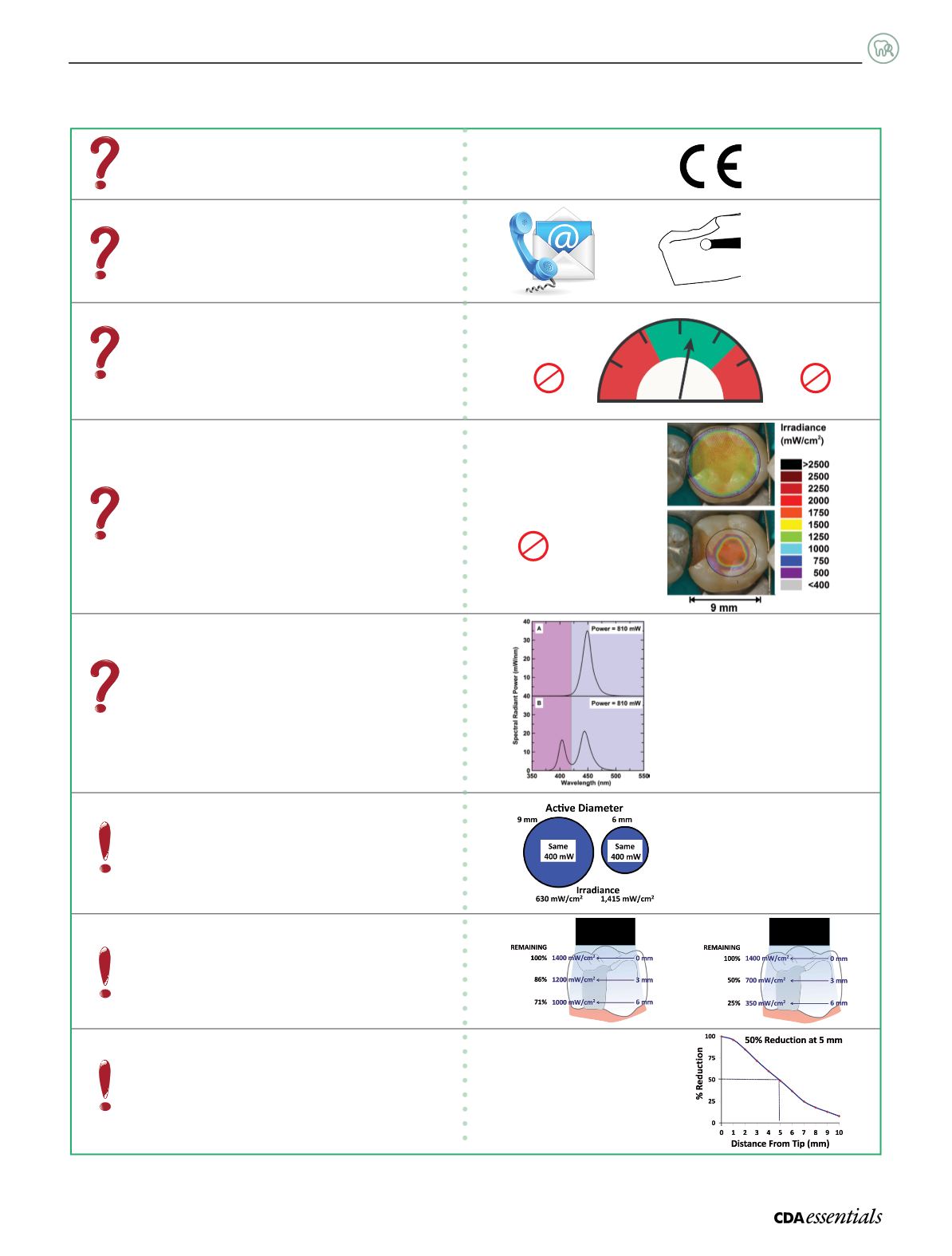

33
Volume 3 Issue 6
|
S
upporting
Y
our
P
ractice
P
P
P
P
Has the light been independently tested and
approved for use in your country?
Does the light come with support, contact
information, and a warranty?
Can the light be easily disinfected?
Does the light feel robust?
When measured accurately, does the light
deliver at least 500 mW/cm
2
in standard mode?
Unless they are matched to a specific resin system,
be wary of lights delivering > 2,000 mW/cm
2
, or
offering exposure times less than 10 seconds.
Will the curing light tip completely cover most
of your restorations, or will overlapping exposures
be required?
Ideally light manufacturers should show that
their light delivers a wide and uniform light
output without irradiance ‘hot’ or ‘cold’ spots.
Can the light access all restorations in the mouth?
Ask the resin manufacturer if a single peak
LED curing light is sufficient?
OR:
Would a broad-spectrum multi-peak LED curing
light be beneficial to activate all the
photoinitiators they use in their resins?
A low power (Watts) light can still deliver a high
irradiance (mW/cm
2
) if a small tip diameter is used.
Because:
Irradiance = Power/Tip Area
Choose a light that is least affected as the
distance from the light tip increases.
Learn how to increase exposure time to
compensate for the decrease in irradiance as
distance between light tip and resin increases.
For example, does it
have the CE mark?
Easily
cleaned &
robust.
<500 mW/cm
2
>2,000 mW/cm
2
Wide tip
with a
uniform output
Small tip with
‘hotspots’ of
high irradiance
SINGLE PEAK (all blue
LEDs) are most effective on
camphorquinone.
MULTI-PEAK (blue
and
violet LEDs) to activate
both camphorquinone
and
alternative photoinitiators.
Decreasing the tip diameter
by 3-mm will double the
average irradiance.
A 50% decrease in
irradiance means
you must double the
exposure time.
Tips toHelp You Choose Your Next Curing Light*
* Resource courtesy of Dr. Richard Price, professor and head of fixed prosthodontics, department of dental clinical sciences, faculty of dentistry, Dalhousie University.
Email:
rbprice@dal.cavs.
















